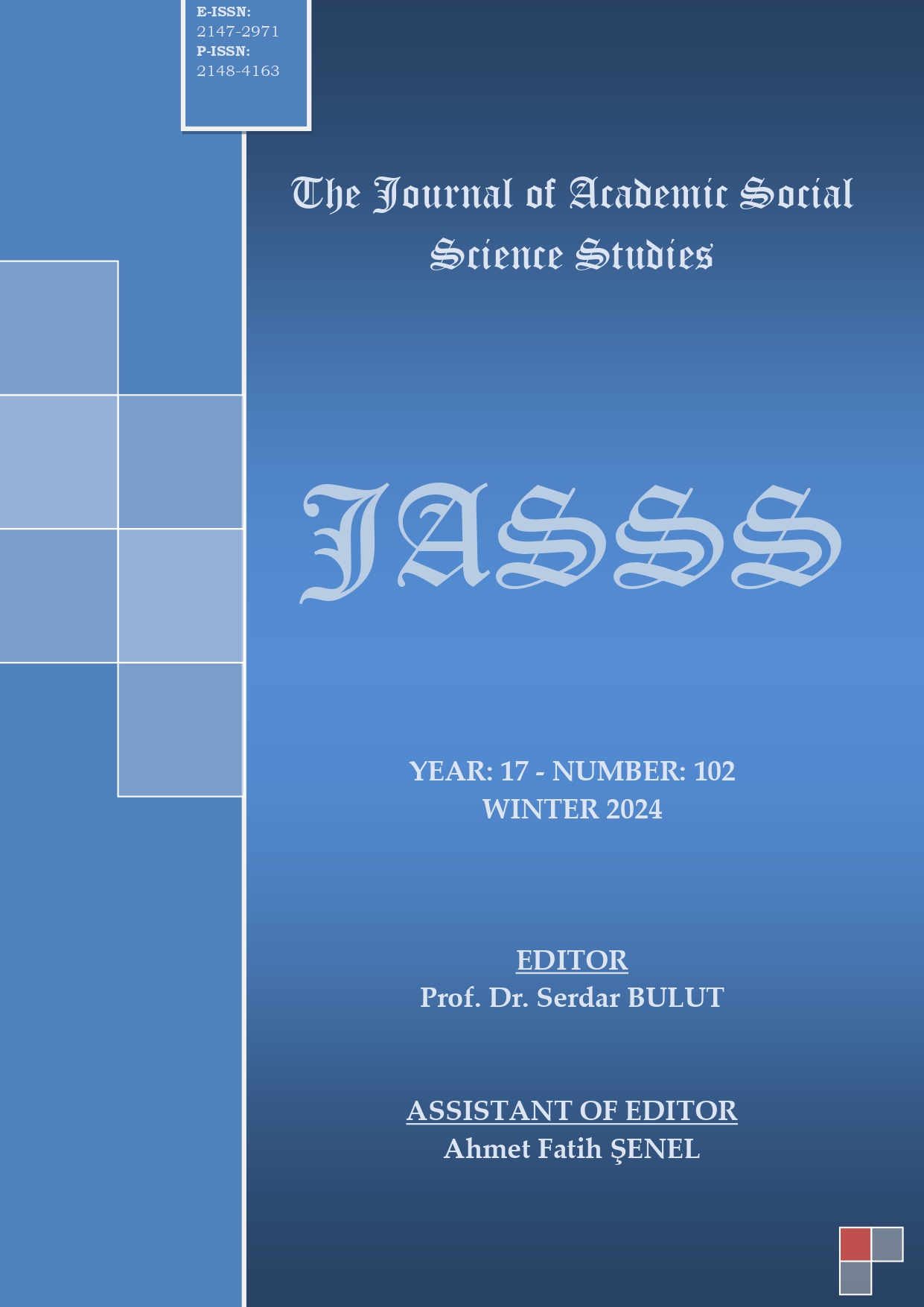Author :
Abstract
Bu çalışmada, Fen Bilgisi öğretmen adaylarının tıbbi bitki kullanımına yönelik bilgi düzeylerinin belirlenmesi amaçlanmıştır. Çeşitli kısımlarından çıkarılan maddelerin birtakım tedavilerde yararlanıldığı bitkilere “tıbbi bitki” denilmektedir. Çalışma 2023-2024 eğitim-öğretim yılı güz döneminde bir devlet üniversitesinde fen bilgisi öğretmenliği 4. sınıfta öğrenim gören 26 öğretmen adayı ile gerçekleştirilmiştir. Araştırmada olgu bilim deseni kullanılmıştır. Veri toplama aracı kapsamında, on iki (12) adet bitkinin (gülhatmi, keçiboynuzu, defne, oğulotu, çörekotu, kekik, öksürükotu, zencefil, susam, yeşil çay, tarçın ve karabiber) ikişer kullanım reçetesine ait sorulardan oluşan anket hazırlanmıştır. Verilerin geçerliliği artırmak için katılımcılarla odak grup görüşmeleri (40-45 dk) ve bireysel görüşmeler (15-20 dk) yapılmış ve veriler betimleyici bakış açısına göre analiz edilmiştir. Aynı zamanda, öğretmen adaylarının kullanım reçetesindeki sorulara verdikleri cevaplar kategorilere ayrılmış ve kodlar belirlenerek çözümlenmiştir. Bitkilerin tıbbi kullanımına yönelik birinci reçetesi en fazla yazılan bitki yeşil çay (24) en az yazılan bitki ise oğul otu (6)’ dur. İkinci reçetesi en fazla (14) yazılan bitki çörek otu, en az yazılan bitki oğul otu (2) ve hiç yazılmayan bitki ise öksürük otudur. Öğretmen adaylarının %73’ünün bitkilerin tıbbi kullanımına yönelik bir reçeteyi, %23’ünün de iki reçeteyi yazdıkları görülmüştür. Bu bilgilere dayanılarak, fen bilgisi öğretmen adaylarının tıbbi bitki kullanımına yönelik bilgi düzeylerinin düşük (%32) olduğu sonucuna varılmıştır.
Keywords
Abstract
This study aimed to determine prospective science teachers’ level of knowledge about the use of medicinal plants. Plants from which substances extracted from various parts are used in certain treatments are called "medicinal plants". The study was conducted with 26 teacher candidates studying in the 4th grade of science teaching at a state university in the fall semester of the 2023-2024 academic year. A phenomenological design was used in the research. To collect data, a questionnaire consisting of questions about two recipes for each of twelve (12) plants (hollyhock, carob, laurel, lemon balm, black cumin, thyme, coltsfoot, ginger, sesame, green tea, cinnamon, and black pepper) was prepared. In order to increase the validity of the data, focus group interviews (40-45 minutes) and individual interviews (15-20 minutes) were conducted with the participants and the data were analyzed from a descriptive perspective. At the same time, the answers given by the prospective teachers to the questions in the usage prescription were divided into categories and analyzed by determining the codes. The most prescribed herb for the medicinal use of plants is green tea (24) and the least prescribed herb is lemon balm (6). The second most prescribed plant (14) is black cumin, the least prescribed plant is lemon balm (2) and the plant that is not prescribed at all is coltsfoot. It was observed that 73% of the teacher candidates wrote one prescription for the medicinal use of plants, and 23% wrote two prescriptions. Based on this information, it was concluded that the knowledge level of science teacher candidates regarding the use of medicinal plants was low (32%).





